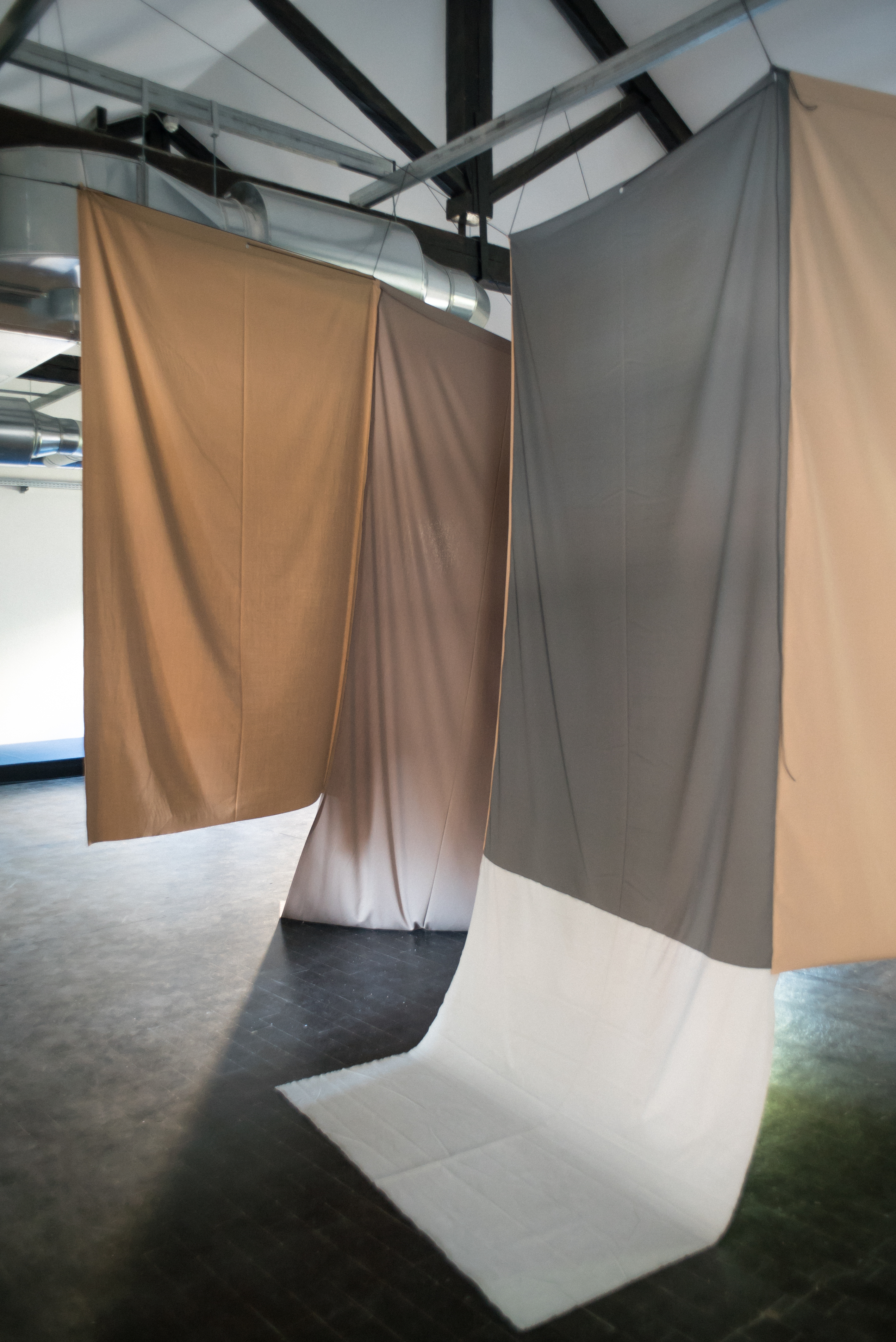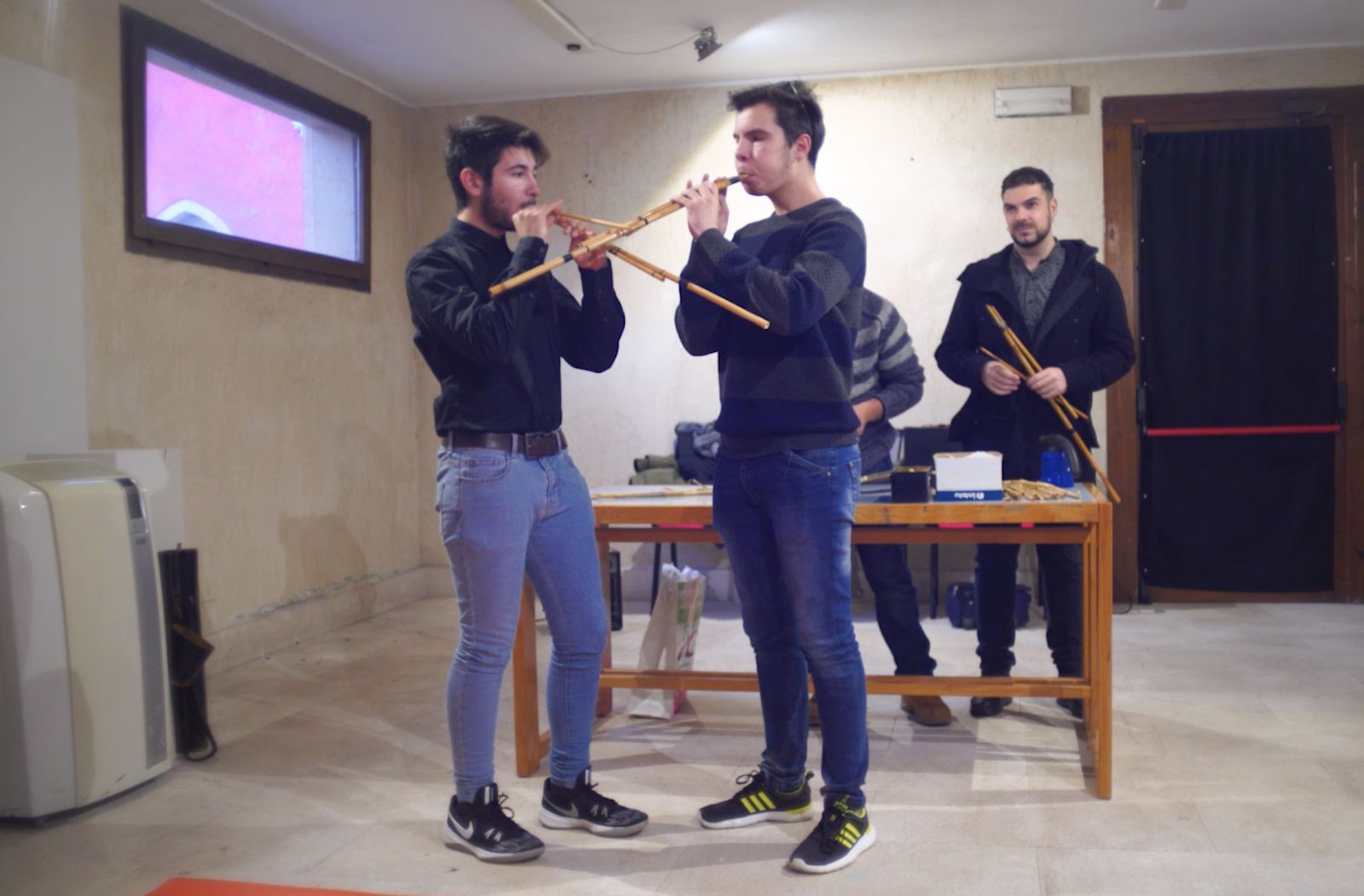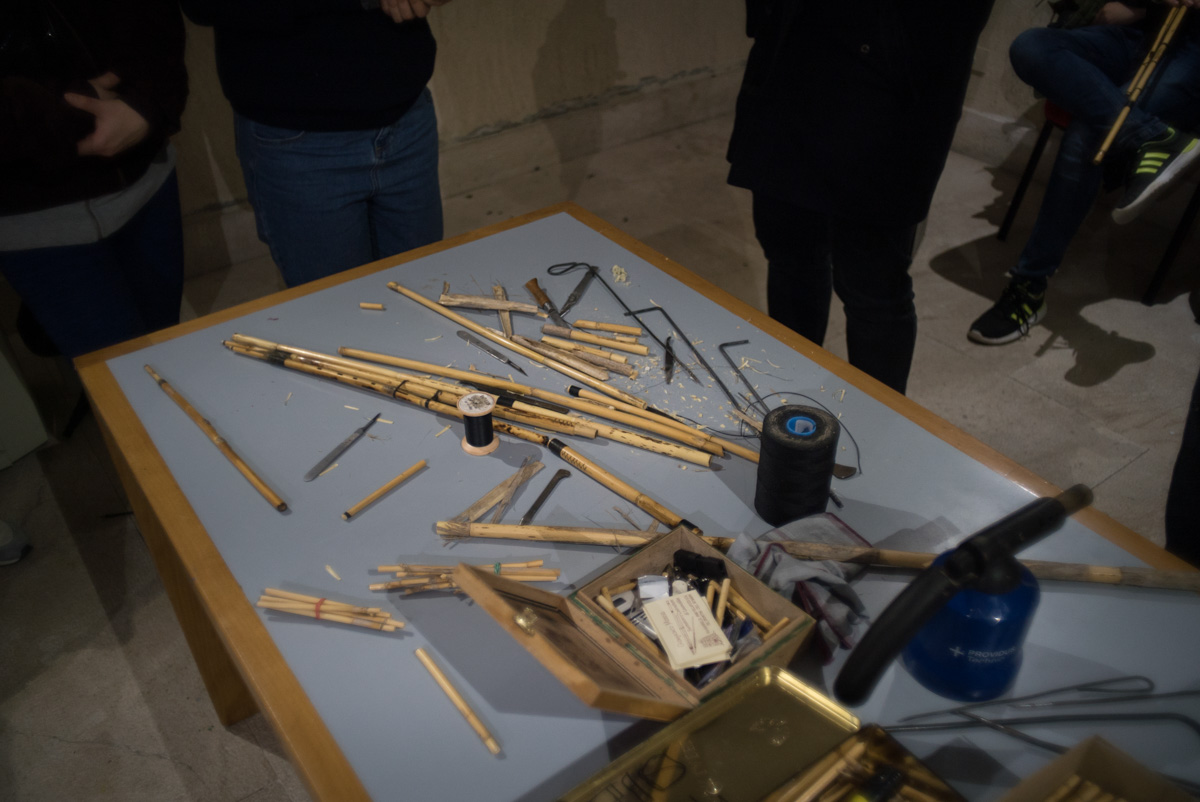FlowingFloating
nell’Oscurità
2019 - research (presentation and workshop, Jenuary 2019) and DAI COOP Summit 2019 (performance and installation, textile, music. Duration 20 min, June 2019), Ex Manifattura Tabacchi, Cagliari.
Audio recording of the performance:
Collaboration with Ciaran Wood and Livio Casanova.
In collaboration with the music school of launeddas of Villaputzu (CA): Gianfranco Mascia, Andrea Pisu, Simone Cireddu, Fancesco Zucca.
In the context of the series of performances Go somewhere I don’t know where, bring me something I don’t know what
DAI Coop study group Curating Positions, Logics of Montage.
Study group intro: https://dutchartinstitute.eu/page/11912/2018-2019-coop-study-group-curating-positions-logics-of-montage-in-between-th

The triple-pipe instrument called “launeddas’’ originated in prehistoric civilisations that inhabited the Mediterranean island of Sardinia.
These intruments’ history of migration throughout Europe and the various meanings associated with them were traced back by ethnographic studies which mainly focused on the instrument’s formal aesthetics and symbolic meaning.
In January we’ve met a few members of the school of launeddas of Villaputzu inviting them to play for us and show how to build launeddas. The instruments are made of poor organic materials that obliges the player to rebuild them every few years. This is one of the features that made launeddas to last through millennials.
The music associated with launeddas goes from pagan and Christian funerary compositions to popular dances of ‘900. In all cases, the ongoing polyphonic sound that - played through circular breathing - is associated with bodily sensations and a sort of darkness, in between temptation and euphoria.
In the performance we co-organised with the musicians, the room was semi-dark, the audience was in the room and the musicians played for 15 minutes non-stop from inside the tent-installation. Therefore, there is no visual documentation of the performance but a live audio recording.
The process that brought to this performative act originated within a larger research on the role of the image in contemporary culture, and a reflection on darkness as the denial of vision.
The work stands against the cultural romanticization of popular aesthetics and the touristic exploitation of the folkloric image, as to say “if you are gonna sell my image I’m gonna play in the dark”.


